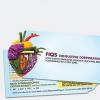Hi Leah,

Welcome to the IFSQN forums.
I found GUIDELINES ON FOOD ALLERGEN MANAGEMENT IN THE SUPPLY CHAIN from FoodDrinkEurope to be useful in this area:
Concerning expectations for allergen management:
- Where unintended food allergen presence is mentioned in raw materials, there is an expectation that suppliers shall provide a quantification (mg allergenic protein / kg food) to enable the food manufacturer to apply risk assessment.
- If regulated food allergens or products containing these are used as raw materials or ingredients, awareness of staff on allergen management should be ensured and specific attention should be given to ensure minimum risk of cross-contamination of other products, allergen labelling and recipe application of these products.
- Procedures should be in place to prevent the exchange of products (raw materials, intermediated products and finished end products) and labels.
- Strict measures to minimise cross-contamination should be applied with products potentially containing regulated food allergen(s) to other products without food allergens or containing different food allergens.
- Attention to the potential for cross-contamination should also be paid at preparatory stage.
There is also a need to consider local guidance and legislation, this is from FDA Food Allergies:
Consumers may also see advisory statements such as “may contain [allergen] or “produced in a facility that also uses [allergen].” Such statements are not required by law and can be used to address unavoidable “cross-contact,” only if manufacturers have incorporated good manufacturing processes in their facility and have taken every precaution to avoid cross-contact that can occur when multiple foods with different allergen profiles are produced in the same facility using shared equipment or on the same production line, as the result of ineffective cleaning, or from the generation of dust or aerosols containing an allergen.
FDA guidance and regulations for the food industry states that advisory statements should not be used as a substitute for adhering to current good manufacturing practices and must be truthful and not misleading.
Kind regards,
Tony













